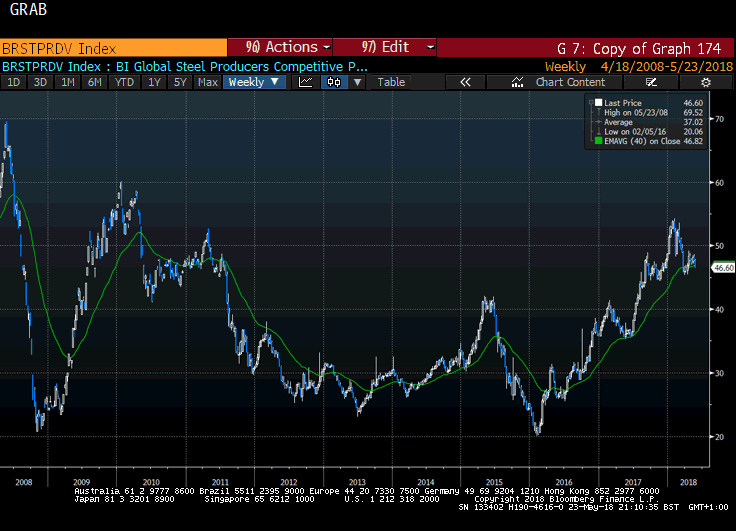Metals and mining rising to the challenges of EV revolution
Thanks to a subscriber for this report from Platts which may be of interest. Here is a section on the global steel market:
Here is a link to the full report.
Here is a section from it:
While all this helped to support steel demand and prices from the end-user side, there was also a major contributor on the supply side of the equation. Without any warning, the Chinese government suddenly and quickly closed down 140 million mt/year of unlicensed induction furnace capacity. These were low quality producers of construction steel, such as rebar, whose output did not register in official steel production statistics. The move opened up domestic market opportunities for legitimate producers to fill, and largely reduced the need for China to export rebar. China exported around 75 million mt of finished steel in 2017. While it was still an enormous amount of steel, it marked a significant decline on the two previous years when the country exported more than 100 million mt.
Separate to the induction furnace closures, China has been cutting legitimate capacity and is expected to have removed some 150 million mt/year between 2016 and the end of this year, as part of its supply-side reform agenda.
Since coming to power in 2013, President Xi Jinping has focused on containing financial risks within China, and ensuring economic growth is measured and sustainable, rather than debt-fueled and ridden with bad assets. Slower economic growth was called the “new normal” a few years ago, but this phrase has since been superseded by “quality over quantity.” The expression echoes the “value over volume” strategy espoused by major iron ore producers Vale, Rio Tinto and BHP. The age of excess and expansion has been confined to the past, it seems.
China’s steel industry demonstrates how quickly the country can ramp up supply when the central government makes a decision to champion a sector. It did exactly the same in solar and wind and it’s doing it today in artificial intelligence and battery manufacturing. Nevertheless, the extent to which it went to any lengths to build out steel capacity now represents a challenge as the infrastructure led boom transitions to focusing on services and domestic demand.

The limits put on steel production during the winter, aimed at curbing smog, as well as the closing of inefficient supply is positive for the global sector. Thyssenkrupp received an investment from activist investors this week suggesting there is some appetite for exploring potential value in the sector. However, the Dollar’s rally could put a dampener on that enthusiasm since it raises the prospect of US Dollar denominated debt being a problem for emerging markets which are among the biggest consumers of steel. That suggests a further recovery in steel shares may have to wait until there is evidence of emerging market currencies finding support.


